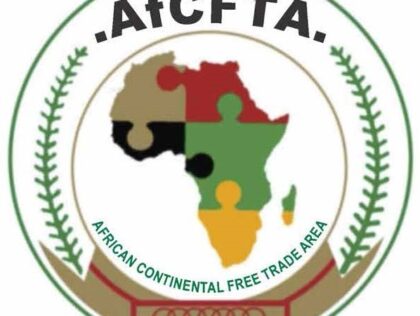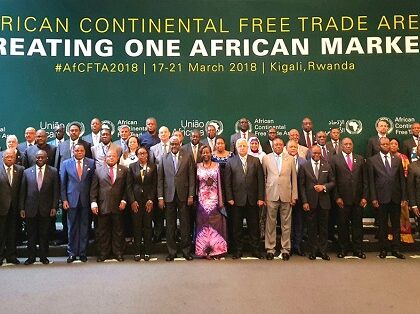The Global Financial System: Issues, Problems & Alternatives Soren Ambrose 12 August 2009 presented @ ATN12, Accra, August’09
- Introduction:
Focus of this presentation will be on public institutions – IFIs, UN – and their responses to the crisis (rather than causes, etc) will not deal with, e.g., national regulatory mechanisms that were a primary culprit and require substantial reform.
Working with the assumption that people are familiar with the story of how the structural adjustment programs of the IFIs opened up Southern countries to exploitation and led to contemporary globalization and the establishment of the WTO.
- G20
The main response on the global level has been from the G20 (which is G8 plus some other industrialized countries, e.g. Australia, and several emerging countries, including South Africa as the only African one). They made several impressive-sounding commitments in April at their London summit:
– a minimal amount of support for multilateral development banks, including the World Bank. Much of this was for trade finance. The WB’s “vulnerability fund” attracted no support at all. The WB has however increased its volume of lending, but the resources are internal.
– the ritualized promise to meet the G8 Gleneagles commitments
– the IMF was the big winner – with a headline number of $750 billion, thus the bulk of the total $1.1 trillion that was committed. But –
– in reality much of that $750b is to come through the “New Arrangements to Borrow” – its loans from rich countries, to be used only in times of extreme need, and available only to middle-income countries. Most of the rich countries do not even count this money as debits in their budget because they are guaranteed to get it back (if it is ever used in the first place).
– the talk about selling some of the IMF’s massive gold stocks to assist low-income countries (LICs) was overblown – the number $6b was stated, but in reality the amount will probably be less than $1b.
– several emerging countries started making new donations to the IMF, but in the form of bond purchases – China, Russia, Brazil, India, South Korea. This has the tendency of making them more inclined to support the IMF rather than urge changes.
– $250b is in the form of Special Drawing Rights (SDRs) which are in effect a currency created by the IMF (with just the consensus of the IMF member countries backing it). These are distributed according to IMF quotas, which mean LICs get a small portion, with about $11b coming to sub-Saharan Africa. SDRs can be used to bolster reserves or be converted to hard currency with the only cost being a relatively small interest charge (currently below 0.5%, but variable according to world interest rates). SDRs are both cheap and have no conditions attached, so SDRs are potentially very attractive resources for developing countries, especially LICs. Many groups are calling for a further special allocation of SDRs based on need rather than IMF quotas.
Although the amounts going to the IMF are in some ways misleading, it is nonetheless clear that the G20 is focused on the IMF as the lead agency to deal with the impact of the financial/economic crisis on developing countries. Most of the big money is flowing to Eastern Europe (Ukraine, Romania, etc.) and some relatively stable middle-income countries (Mexico, Colombia).
3. IMF in Africa
The G20’s focus on the IMF has put many civil society groups in an uncomfortable position – they recognize the desperate need many countries have for resources, and have to decide whether to issue explicit calls for “more money from the IMF” despite having fought IMF conditions and the resulting debt for years. Before the crisis, the IMF was at its weakest point, with many of its main borrowers paying back early and walking away, but has now made a sudden “come-back.”
Yesterday we saw the list of 20 sub-Saharan countries that have takenout new IMF programs since the crisis began. At least five of them are countries that would have preferred to avoid borrowing from the IMF (many of the others already had IMF programs) – Kenya, Ethiopia, Ghana, Congo-Brazzaville, Senegal.
We should keep in mind that countries have another potential reason for borrowing from the IMF – it’s not just for the cash, but also for the “seal of approval” that the IMF offers, which certifies countries for aid. This is referred to by the IMF as its signalling function; civil society often refers to it as a “gatekeeper” role. This raises the threat of the re-emergence of a “debt treadmill” and possibly a new, intensified debt crisis in Africa.
4. IMF conditions
Although the IMF has somewhat narrowed its conditions in some instances, they continue to impose the kinds of conditions that are widely viewed as anti-development.
Among the problems with the IMF is the restriction it puts on countries spending aid money they get from other sources. For example, it insists that countries with an inflation rate above 5% (which most economists consider very low for developing economies) and reserve levels below 2.5 months of imports spend no more than 5% of the money, and route the rest to paying down debt or to bolstering reserves.
So far African governments, such as in the communications from the “Committee of Ten,” have called for increased policy space, but have not even used the word “conditions” or “conditionalities.” They are failing to use the problems exposed by the crisis to insist on a restructuring of the global financial system that would serve Africa’s interests.
Among the conditions that the IMF has been including in its new programs in Africa are: inflation targeting, usually at 5% or below and deficit caps (e.g. Ethiopia was told to reduce it from 2.9% of GDP to 1.5%) – it is these restrictions that cause African budgets to contract, preventing governments from hiring adequate teachers, nurses, etc. Others are: restrictions on public sector wages, tightened monetary policy (raising interest rates, reducing money supply), cutting domestic borrowing, and no use of subsidies for fuel, power, water, etc.
5. Alternatives
A number of alternatives to the current system have been proposed, but most of them have not been elaborated or publicized much. These include:
– the suggestion of moving the IMF’s Africa operations to the African Development Bank;
– the creation of a new regional development institution on the model of the Bank of the South in South America;
– the AU’s perennial investigation of the possibility of an African Monetary Fund and African central bank;
– a currency-swap agreement on the model of the Chiang Mai initiative of the ASEAN +3 countries; and
– engaging regional economic communities (SADC, ECOWAS, etc) in regional finance arrangements (though there are already some sub-regional development banks that could be used more effectively).
6. UN process
The most developed set of alternative proposals has come out of the UN process that culminated in the UN Conference on the World Financial & Economic Crisis and Its Impact on Development, held in New York in late June. This unique occasion was made possible by the determination of a leftist President of the General Assembly (Miguel d’Escoto of Nicaragua), the support of the ALBA countries (Venezuela, Bolivia, etc), and the unity of the G77 bloc, held together by the lead negotiator, Lumumba Di-Aping from Southern Sudan. The final statement of the conference was a compromise document, but had some very positive components. It is important that it was approved by unanimous consent, so even though countries like the US immediately registered their concerns about many sections, they all formally approved the statement.
Among the positive components were the repeated statement that the UN should be involved in economic matters – something which has largely not been true thus far. The statement also contains a paragraph supporting the use, to combat crisis, of “trade defense” measures such as debt standstills and capital controls. There was also a call for further allocations of SDRs, and their use for development purposes (i.e. not just for reserves). In addition to that, the statement features an endorsement of examining how the global reserves system can be reformed – a potentially very significant development.
Unfortunately, it is not entirely clear how the process will continue, though there is a “working group” established to carry it on. African governments were not very visible in the process, and should take a more active role.
Many of the measures that the G77 tried to insert in the statement were drawn from the recommendations of a UN commission convened by d’Escoto, known as the Stiglitz Commission. Its final report, due to be published soon, could be an important moment for advancing significant alternatives. Among the recommendations in the report are:
– a new credit facility – basically a new IFI – that would be democratically structured
– reform of the global reserve system that would eliminate the distortions that result from reliance on the US dollar and free up capital currently being held in massive reserves by countries like China.
– creation of a Global Economic Coordination Commission, on a par with the UN Security Council, which would supplant the G8 and G20 and be more democratic, i.e. with delegates representing constituencies of countries.
– a new global coordinating body for financial regulations, including a Financial Product Safety Commission.
– an International Bankruptcy Court to resolve chronic debt problems.
– innovative sources of finance such as financial transaction taxes and a carbon tax.
– a “truly development-oriented trade round”.


